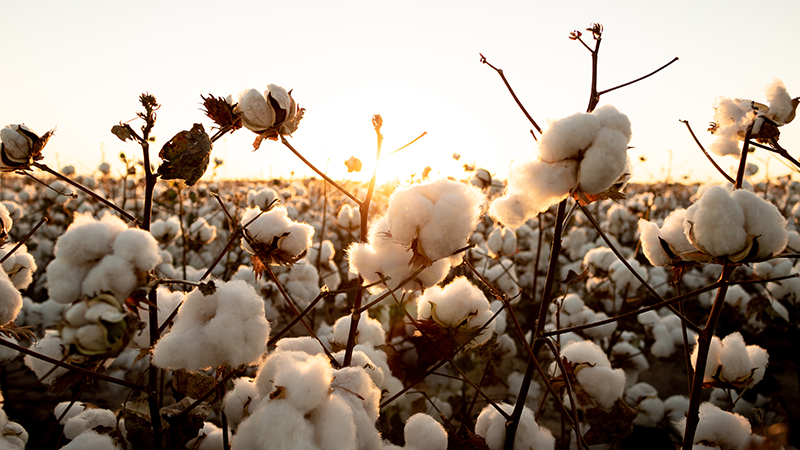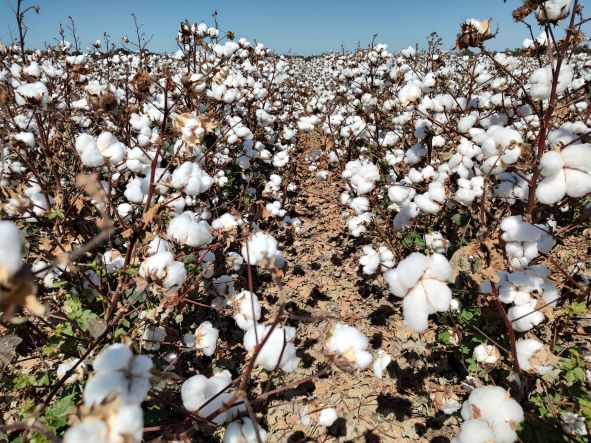Crop Scan AgReport – Planting Wrapping Up as Attention Turns to Bugs, Weeds
Cotton Grower® magazine’s Crop Scan AgReport for early June shows planting across most of the Cotton Belt is finished or wrapping up as insurance deadlines loom or growers shift acres to other crops. Attention now turns to early season insect and weed management – which is proving tricky in some areas due to too much rain.
Tucker Miller is a Mississippi-based independent private consultant for cotton, soybeans, corn, peanuts, rice and vegetables. He is a member and past president of the Mississippi Agricultural Consultants Association.
All of our cotton has been planted. We had to replant a few low bottoms, but not much acreage at all. Our oldest cotton has five true leaves and will be finding squares this week. Our youngest cotton is at two true leaves.
We have had heavy thrips pressure the last two weeks and had to spray a lot of the younger cotton. In furrow treatments held up, but the seed treatments played out and had to be sprayed.
We have started weed control applications and are about halfway over for the first time. We have received a few showers lately, and they were well received.
We will continue with our weed control and start watching for Lygus in the next couple of weeks. It looks like we are off to the races now.
Chad Harrell owns and operates Harrell Agronomic Services in Northeastern North Carolina. He is a member of the North Carolina Agricultural Consultants Association and serves on the board of the North Carolina Cotton Producers Association.
We have finished planting and achieved good stand counts thanks to the rains last week. The weather has gone from one extreme to the other for us. We received 4 to 8 inches of rain last week, allowing the later planted cotton to germinate.
Many fields have different stages of cotton due to the lack of moisture throughout May. The earlier planted cotton is now at fourth and fifth leaf and becoming safe from thrips.
Overall, thrips pressure has been high this year with most fields receiving a treatment. This week, we will resume thrips and herbicide applications as soon as we dry out enough to get back in the field.
Kerry Siders is Texas A&M AgriLife Extension Agent-IPM for Hockley, Cochran and Lamb Counties, providing education and applied research for weeds, insects, diseases, nematodes, growth regulators and harvest aids in cotton. He is a member of the High Plains Association of Crop Consultants.
Cotton here on the west portion of the Southern High Plains of Texas is mostly planted. There are dryland acres which still need to be planted as soon as it dries enough to get back in the field and before the planting deadline. We have been blessed with some significant rainfall the past few days, making prospects for a crop more realistic. This weather has thrown us a curve ball in the completion of planting and may cause some to divert acres to alternative crops such as grain sorghum or corn.
Cotton stand evaluations are our next priority as we visit fields. Most of our cotton acres are on 40-inch rows, so we generally count the number of plants in 13 feet of row (1/1000th of an acre). We would consider 26 plants (2 plants per foot) in that 13-foot space to be 26,000 plants per acre. This would be a minimum good stand on irrigated cotton. Ideally, your stand would have closer to 40,000 plants per acre or closer to 3 plants per foot. Dryland acres can dip down into the 19,000 range or 1.5 plants per row foot. In either situation, if you get much below these standards, you most likely need to consider your insurance standing and a replant.
The moisture will need to continue to keep us out of the drought status. However, our status has much improved, and producers are going to have to step up their weed control programs. We are seeing weed pressure already in planted fields, meaning that no residual had been applied yet and that a post-emerge herbicide like Roundup, Liberty, XtendiMax or Enlist will need to be used along with the addition of a residual herbicide.
Another issue which producers will need to recalculate due to recent rains is their fertilizer program matched up with a new realistic yield goal. We often do this recalculation too late in June or July and are behind the growth curve to do much good and can cause delay in cotton plant maturity. Now is the time to react to these rains.
Insect pest wise, rains normally increase pest pressure for us as it increases overall plant hosts. Although it is very quiet on the insect front currently, do not let your guard down. As an example, currently for us locally, thrips have been almost non-existent. As this cotton has been slow to grow-off and many acres are just now emerging, thrips could rapidly develop and be devastating. Fields must be scouted! A good field scout can sure pay, especially in these tight times.
Mark Nemec is a Texas independent agricultural consultant, now in his 27th year of checking cotton, wheat, grain sorghum and corn in the Blacklands and Brazos River Bottom area of Central Texas.
The cotton crop in Central Texas has struggled from the start, and May didn’t do it any favors. The average high temperature for the month was 79 degrees, which is about 10 degrees below normal. It has been cloudy and cool a lot more than what we need. Some fields that are on higher ground or have had less rain are looking pretty good. Fruit set is a little behind due to lack of sunshine. And, to add insult to injury, we started seeing a large migration of fleahoppers moving in this week. With the fields being soaked to the bone, we are relying on air support. Of course, they are getting backed up as well by rain delays.
The cotton that has had more rainfall or is on lower ground is very far behind. One field planted before Easter is just now beginning to square. There are still some areas that will have to be replanted. Those fields are going to need some TLC. We will apply some foliar treatments to perk it up and get it going. These fields will be harvested late.
It goes without saying, weeds are a major problem now. Herbicide applications are way behind schedule with our timing all out of whack. Sprayers are trying to get in as fast as they can. The harvest guys are not going to be happy with all the deep ruts they are cutting in the fields.
It has been nice to finally see some sunshine the last couple days and a better forecast ahead.














